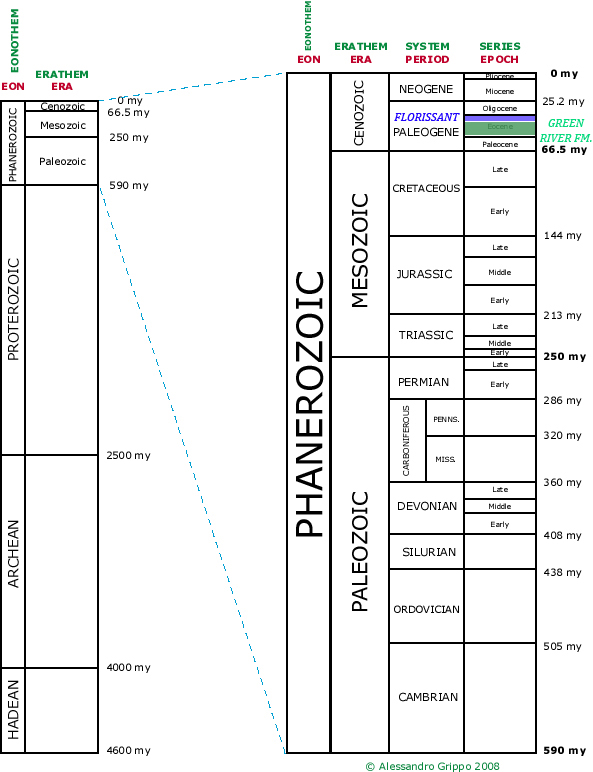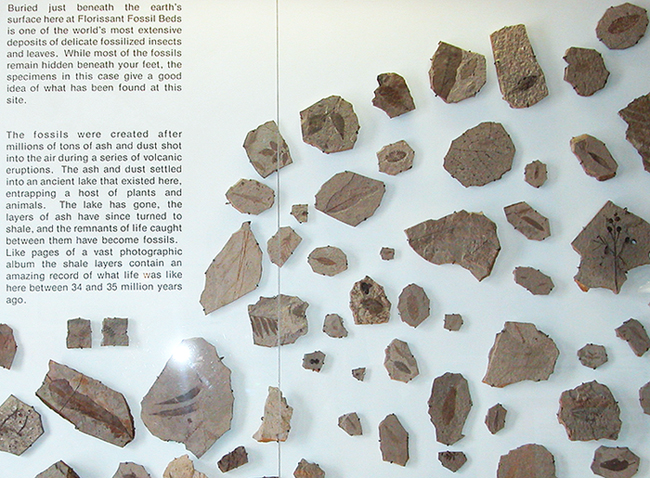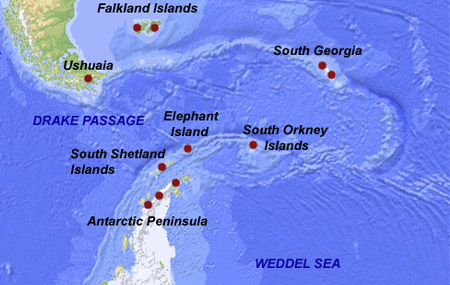
| |||||||||||||||
| Introduction | Last Updated • May 15, 2020 | ||||||||||||||
The mass extinction that occurred at the end of the Cretaceous is responsible for a marked renewal of faunas and floras: dinosaurs and pterosaurs were replaced by mammals and birds as the dominant vertebrates on land; ammonites and marine reptiles disappeared from the oceans; angiosperms boomed after their early origination in the Mesozoic. The new era that developed after the Mesozoic is called Cenozoic. The Cenozoic consists of the Paleogene, the Neogene, and the Quaternary. The Paleocene and Neogene periods are also commonly referred to as Tertiary, following a now almost completely abandoned historical classification that included the Primary (now Paleozoic) and the Secondary (now Mesozoic). The Paleogene period is divided into the Paleocene, Eocene, and Oligocene epochs, while the Neogene is divided into Miocene and Pliocene.
The two Lagerstätten of this week are from the Paleocene and the Eocene, and represent the conditions that existed on Earth a few million years after the K/T extinction. Both Lagerstätten exist in freshwater lake deposits and come from the American southwest: the Green River Formation is extended over the Wyoming/Colorado/Utah boundary area, while Florissant is within a specific area of Colorado.
Here is a map of the world during the Eocene, the time of both the Green River Formation and Florissant.
 The Eocene: the Green River Formation and Florissant in relation to the Geological Time Scale | The Green River Formation
| Last Updated • May 15, 2020 | The Green River Formation is the result of freshwater lake deposition. These deposits yielded the richest, most diverse example of Early Paleogene freshwater aquatic community in the world. The Green River Formation Lagerstätte includes an enormous amount of specimens (Concentration Lagerstätte) most of them in a state of excellent preservation (Conservation Lagerstätte). Complete communities are preserved, with excellent skeletal preservation and, in the case of some amphibians, lizards, and insects, soft tissue preservation. This Lagerstätte is also extremely important because it allows us to observe the development of the modern North American fish faunas. Read this section for completeness of information. Lance Grande, cited at the end of the paragraph, is the scientist featured in the movie we watched in class. 
The Green River Formation spans from approximately 55 million years ago (Late Paleocene) to 38 million years ago (Late Eocene). It represents both one of the largest (in terms of areal extension) and longest (in terms of duration) lacustrine systems of the world. Figure 187, page 187, shows the location of the three lakes, named respectively, clockwise, Fossil Lake, Gosiute Lake, and Uinta Lake. All three had a different depositional history. Figure 189, page 189, offers a stratigraphic section for all three lakes; the Green River Formation and its members are represented in yellow, and you can see how the maximum temporal extension is observed in the Uinta Lake. That is, the Uinta Lake is the one that was around the most, existing before the other two appeared (Paleocene and lowermost Eocene), then in coincidence with the others (Middle Eocene) and again by itself at the end of the Eocene.
All three lakes show evidence of mass mortality of fish populations, but not necessarily for the same reasons. In the deeper Fossil Lake mixing of stratified waters is the most likely cause for mass mortality. During winter, water is cold throughout the whole lake and circulation is thorough, but in summer the high temperatures found at the surface of the lake make the water less dense, and hence unable to sink. Since surface waters are the ones where photosynthesis can occur, if there is no mixing then there is no oxygen at the bottom: bottom waters become deoxygenated (anoxic), stagnant, and rich in lethal H2S. So, during summers the anoxic bottoms would preserve carcasses from decomposition by scavengers and bacteria, while when water mixing starts again during the following winter, the toxic waters are brought to the surface, causing mass mortality. In Lake Gosiute an excessive salinity (caused by water evaporation, like in today's California and Nevada playa lakes) is the likely cause of mass mortality. Another possibility is that, since the lake was much shallower than Fossil Lake, its temperature was rising to unacceptable levels, causing mass mortality, particularly for fish like the herrings found in enormous amount in the rocks of this area. In Lake Uinta there are no mass mortality events, but simply a few episodes of death affecting a specific kind of fish, the gar. Gars can survive in extreme conditions, including stagnant waters, for long periods, and can even breath air directly if necessary. Eventually though they would not be able etc live out of water. Lance Grande suggested that evaporating waters originated smaller and smaller ponds where weaker organisms were dying, and gars fed on them (and that is why there are no fossils of those). Eventually, gars would succumb themselves at the end of the lake desiccation. This paragraph lists a variety of different organisms. You do not need to know the names of them all, but go over these materials and be aware of the most common specimens, what do they indicate in terms of ecology and paleoenvironment, how do they help us reconstruct the conditions of the lake at the time.
For this section, know what kind of ecosystem we are dealing with, and how do we know about it (for instance, why is it a subtropical/tropical lake, among other things). Also know the food webs that exist in the system.Br> Finally, know the general differences that exist among the three different water bodies that make up the Green River Formation (Lake Uinta, lake Gosiute, and Fossil Lake) Read this section for completeness of information. The most important difference that exists between the Green River Formation and the Grube Messel (or Messel Pit) is that in Germany there is greater abundance of mammals, including marsupials mammals. I am not going to ask questions out of this section.
The German site is also an UNESCO protected area, and here is a link to the Messel Pit (Grube Messel) site in Germany. | Florissant
| Last Updated • May 15, 2020 | Florissant existed a few million years later than the three lakes of the Green River Formation, and includes a fauna and a flora likely to have been very similar to the one found in the older Lagerstätte. Still, the circumstance of preservation at the two sites are different. The fossils of this Lagerstätte can be seen at Florissant, Colorado, where the National Park Service maintains the Florissant Fossil Beds National Monument. As usual, read this part for completeness of information, but there will be no questions out of it in the quiz. Page 208 gives you a general geologic background on how the landscape at Florissant came to be. A variety of different intermontane basins (valleys) originated because of different episodes of orogenesis, culminating in the Rocky Mountains of today. Among the last episodes connected to this orogenesis, volcanic activity not dissimilar form that currently occurring in the Cascades developed in this area.
In the Late Eocene, a network of rivers was flowing through the Florissant Valley. These rivers were carrying clastic sediment eroded from the mountains built during the previously mentioned orogenetic episodes. Conglomerates and sandstones are found, but then a powerful volcanic eruption caused a pyroclastic flow that buried everything on its path and resulted in the deposition of the Wall Mountain Tuff. The story repeated itself a couple of million years later when a new series of eruptive events, which included lava flows, pyroclastic flows, ash falls, debris avalanches, and lahars occurred, resulting in the deposition of the Thirtynine-mile Volcanic Field. The stratigraphic column of figure 223, page 213, illustrates the different deposits at Florissant, and should be kept handy when studying the succession environments and the conditions of fossilization in the area. In brief, the sequence consists of three distinct shale levels, each representing a different lacustrine stage (or three different moments during which the lake existed a this location). The lake is at first filled and its sediments replaced by a river system (mudstone), with occasional sandstone lenses representing the actual active river channel. The 39-mile tuff then covers the sequence, and that is where buried tree stumps are found. After this volcanic episode, lake conditions are reestablished, but the new shales are eventually covered by a second lahar (the caprock conglomerate). A third, upper shale unit shows the lake coming back again, only to be eventually filled with conglomerate by the rivers draining the area. This time, the lake disappears permanently. While volcanic activity does not follow any periodicity, and volcanic tuffs levels are present in many parts of the sequence, the lake shale - when left undisturbed - show possibly annual cycles. These cycles are related to diatomaceous algae and shale cycles. You should know the way these cycles form, and under what conditions fauna and flora were preserved in ancient Florissant lakes. Any material that might have covered the Florissant Formation has been eroded by erosion following the Late Tertiary uplift that affected the southern rocky Mountain. As for the Green River Formation chapter, a long list of names appears in this paragraph. I am not going to ask you individual names but you should know what groups are found, what are the most commonness and what i their ecological significance, and what organism is Florissant famous for.
The majority of plants and animals found as fossils at Florissant is very similar to those alive today, except for mammals. These organisms would not be found alive in the area today of course (see the redwood sequoia discussion in the book). This means that, except for us mammals, many of the organisms did not change much in the last 36 million years.
 A few fossils from the Florissant Fossil Beds National Monument visitor center.
Know this whole paragraph (part 5), but in particular be able to tell the relationships that exists between the shape of plant leaves and paleoclimate (pages 228 and 229): what does it mean, for instance, if a plant leaf has a smooth, entire margin, instead of a variety of teeth, spikes, and lobes? 
A simple illustration showing leaves with different margins. A smooth, entire margin indicates a warmer climate. If you are curious, here is a link for you (no questions in the quiz) from the National Museum of Natural History: A leaf as a thermometer The Green River and the Florissant Formation are not coeval but share many similarities. Florissant does not show some of the tropical species seen in Green River, indicating a possible cooling over the 16 million years that separate them. It is likely though that the creatures in Florissant are derived from those at Green River. A much closer (in time) fossil association is that from the lacustrine deposits of the John Day Fossil Beds National Monument, in Oregon. The Oregon lake formed in the Oligocene. At the Eocene-Oligocene boundary Earth underwent global cooling, possibly as a result of changing ocean current circulation, triggered by plate tectonic motion. This cooling event is still active today: we are living in an icehouse time (with permanent ice at the poles), and that started at the Eocene/Oligocene boundary, likely because of the opening of the Drake passage between South America and Antarctica.  A map showing the open passage (Drake Passage) that exists today between South America and Antarctica, where the West Wind Current exists. This is the only ocean current that circulates entirely around the globe, without being interrupted by a continental mass. This kind of circulation prevents the warm equatorial water masses from reaching Antarctica, thus keeping it permanently cold. The faunas and floras at John Day Fossil Beds show that some similarities with those of Florissant, but it is evident that while some of the Colorado organisms were able to cope with climate change, others could not.
© Alessandro Grippo, since 1994 | |||||||||